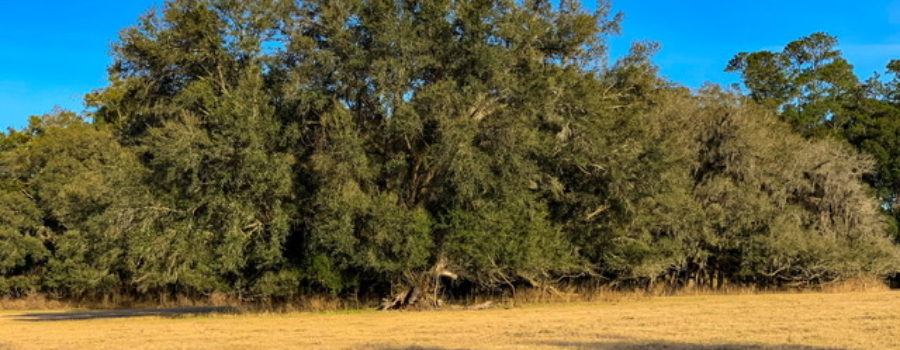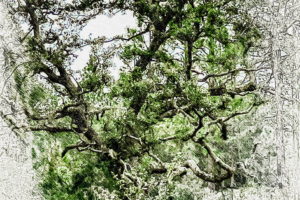The Stately Live Oak Tree is the Classic Southern Oak

When I first moved here many years ago the whole property was pretty much wild. There was a small single wide mobile home and about a two foot wide strip of grass around it. Everything else was overgrown with rosemary (not the kind you make spice with), dog fennel, and a variety of other “weeds”. At one end of the house there was a small oak tree that was barely taller than I was. I lived in that single wide home through two years of post bachelors work and four years of vet school. During that time between me and the goat that I had at the time, we got a fair amount of the front yard cleared and some grass growing. After I started actually working, and decided that I was going to be in this area long term I decided it was time to get a bigger, newer home. By the that time, that little tree had grown to be well over ten feet tall, and was developing a beautiful canopy. I had also become rather fond of it since it provided shade for the house and habitat for all sorts of wildlife. So when it came time to move the old home out and the new one in and the movers wanted to cut the tree down I told them absolutely not! They complained plenty about it during the moving process, but they did manage to get the job done without killing my tree.

Over the years, that tree has continued to grow, and I have built it into my front porch. It’s now probably about thirty feet tall and the canopy spreads out over most of the porch and part of the house. I always knew it was an oak, but it wasn’t until the last ten years or so when I really took an interest in not only the local animals, but also the local plants, that I realized it was a live oak. One of the things I learned was that there are actually nineteen different types of oaks that grow in Florida! We don’t have all of them here, but we do have quite a few. The live oak, though, is kind of the classic southern oak tree. I’m sure a lot of that has to due with their regal stature and their artistic twisting branches. Drape those in some Spanish moss, and you really do have a magnificent tree!

Live oaks can grow to be up to sixty feet tall and live to be centuries old (so my tree has years and years left in it). Their canopies can spread out to cover an amazingly large area, and they provide plenty of shade since they are an evergreen tree (not like the pines, but they shed their old leaves as the new ones come in, so they are never bare). They are also very strong trees. Their wood is very dense, and their large limbs are quite heavy. In the past, live oak wood was sometimes used to build ships, including the USS Constitution (hence the nick name “Old Ironsides”). Mature live oaks are also very wind resistant, and can often sustain hurricanes. That means that if planted near a building (like my house!) it can provide a wind break and help protect the structure. Yet another reason I’m glad I didn’t let them cut down that tree!

So are there any disadvantages to having a live oak near your house? The answer to that is yes. Mature trees can be pretty messy. They shed their old leaves in the spring as new ones come in. The leaves are fairly small and heavy, so they can kill grass under the canopy, make a mess on your porch, and blow into your swimming pool. If planted near the house, you also need to sweep the leaves off the roof from time to time, or they will damage the roof. As you can see, keeping them cleaned up can be a real chore. Then in the fall they drop acorns everywhere. The wildlife, especially squirrels will pick up a lot of them, but they can be painful to step on, and they can cause vomiting and diarrhea in dogs that eat a lot of them. In my opinion, the mess and the extra chores are well worth the benefits that the tree provides, and I’m very happy that I have kept mine. Would you consider planting a live oak on your property?





Recent Comments